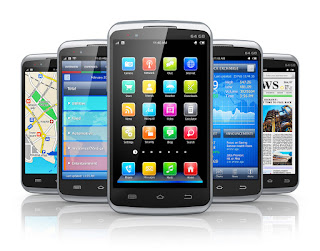Chapter 1: Introduction to the world of computers
Topic 3: Computer Networks and the Internet
A computer network is a collection of computers and other devices that are connected together to enable users to share data hardware, and software, as well as to communicate electronically with each other. Networks allow you to share files and programs. Computers connected to a network can share equipment to reduce costs. For example, rather than buying a printer for each computer, everyone can share one central network printer. Software designed for networks lets people send and receive electronic mail with other users on the network and share databases.
 |
| Computer Network |
There are two basic types of networks:
1. Local Area Network (LAN)
A Local Area Network is a group of computers that share the resources within a small geographical area. LAN is subdivided into two types of networks, peer-to-peer and client/server.
I. Peer-to-Peer
In a peer-to-peer network, everyone stores their files on their own computer, and anyone on the network can access files stored on any other computer.
II. Client/server
A client/server network, everyone stores their files on a central computer called a server. Everyone on the network can access the files stored on the server or central computer.
2. Wide Area Network (WAN)
WAN connects computers across a large geographic area. Internet is the type of Wide area network.
Basic Components/Parts in a Network:
Network Interface Card (NIC)
A network interface card is a device that physically connects each computer to the network and allows your computer to communicate to other computers and devices on the network.
Cables
Cables are the wires that physically connect the computers, printers, and other equipment on a network.
Hub/Switch
A hub or switch is a device where all the cables on a network connect.
Network Operating Software
Your operating system must provide networking capabilities. Windows XP and Windows XP Professional have peer-to-peer networking capabilities. Windows XP Professional has client/server capabilities.
What are the Internet and World Wide Web?
The Internet is the largest and most well-known network in the world. It is technically a network of networks. Computer network is linking millions of computers in the world. Internet is providing the communication between the user of computer and mobiles etc. Some of the most common Internet activities today are exchanging e-mails and accessing content located on the Web pages. A group of Web pages belonging to one company is called a Web site. Web pages are viewed using a Web browser, such as Google Chrome, Internet Explorer (IE), Opera, or Firefox.
World Wide Web (WWW): The collection of Web pages available through the Internet.
Web page: A document, typically containing hyperlinks to other documents, located on a Web server.
Web site: A collection of related Web pages usually belonging to an organization or company.
Web server: A computer that is continually connected to the Internet and hosts Web pages those are accessible through the Internet.
Web browser: A program used to view Web pages.
Accessing a Network or the Internet
Most Internet connections today are always on connections, which means the computer or other device being used to access the Internet is continually connected to the ISP’s (Internet Service Provider) computer. With a direct connection, you only need to open your Web browser to begin using the Internet. To request a Web page or other resource located on the Internet you need internet address. Internet address is a unique numeric or text-based address. The most common types of Internet addresses are IP addresses and domain names (to identify computers), URLs (to identify Web pages), and e-mail addresses (to identify people).
Domain Names and IP Addresses
IP addresses and their corresponding domain names (A text-based Internet address used to uniquely identify a computer on the Internet.) are used to identify computers available through the Internet.
.com Commercial businesses sites
.edu Educational institutions sites
.gov Government organizations sites
.net Network providers and ISPs sites
.org Noncommercial organizations sites
Uniform Resource Locators (URLs)








































